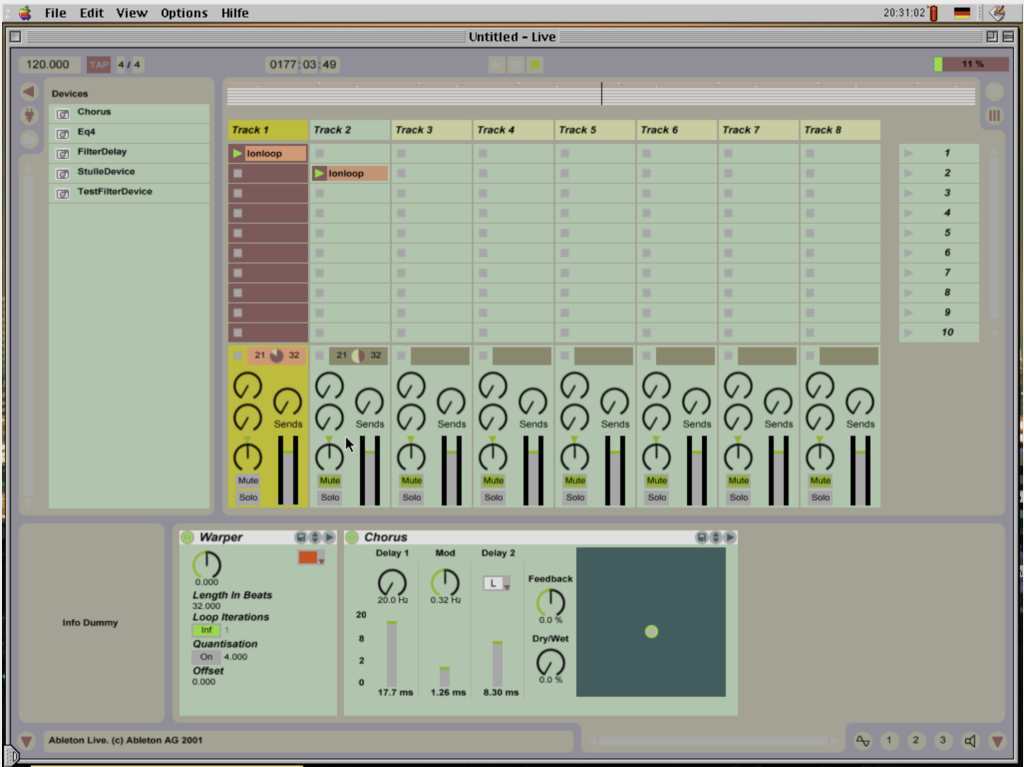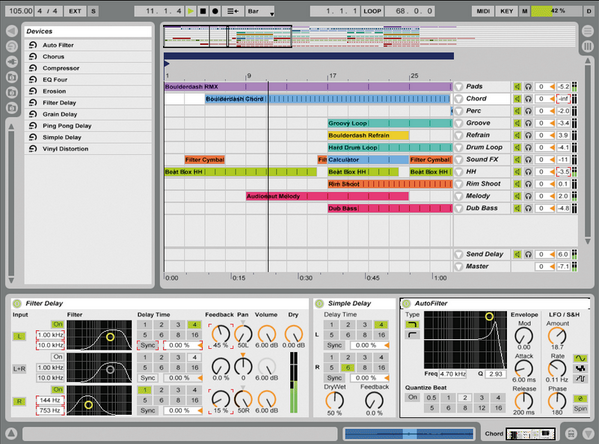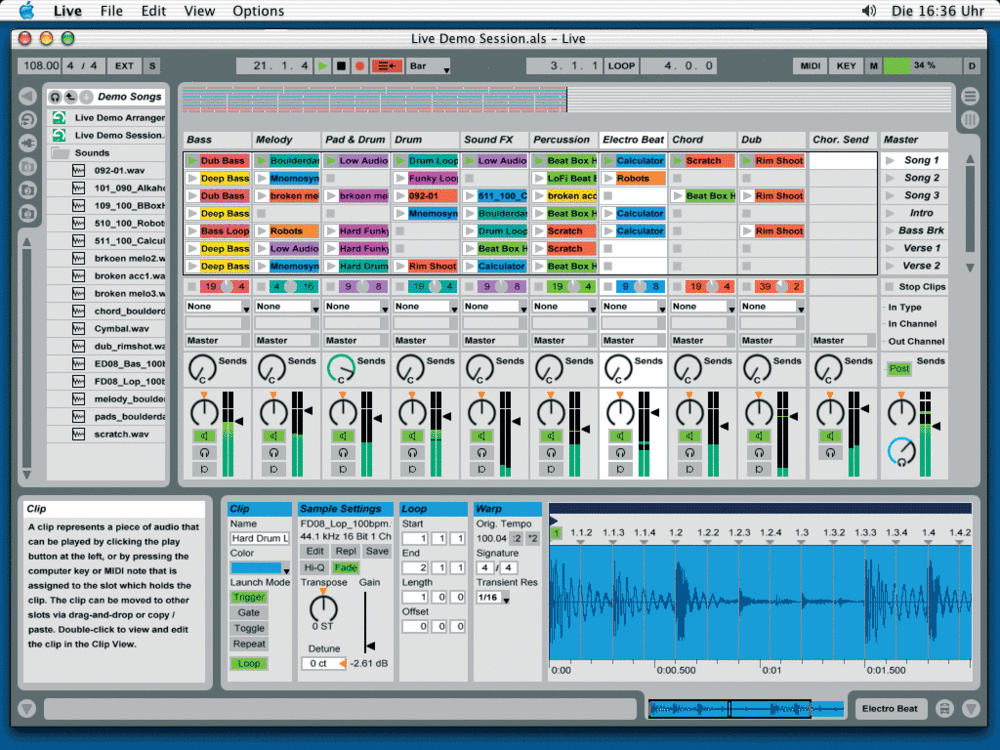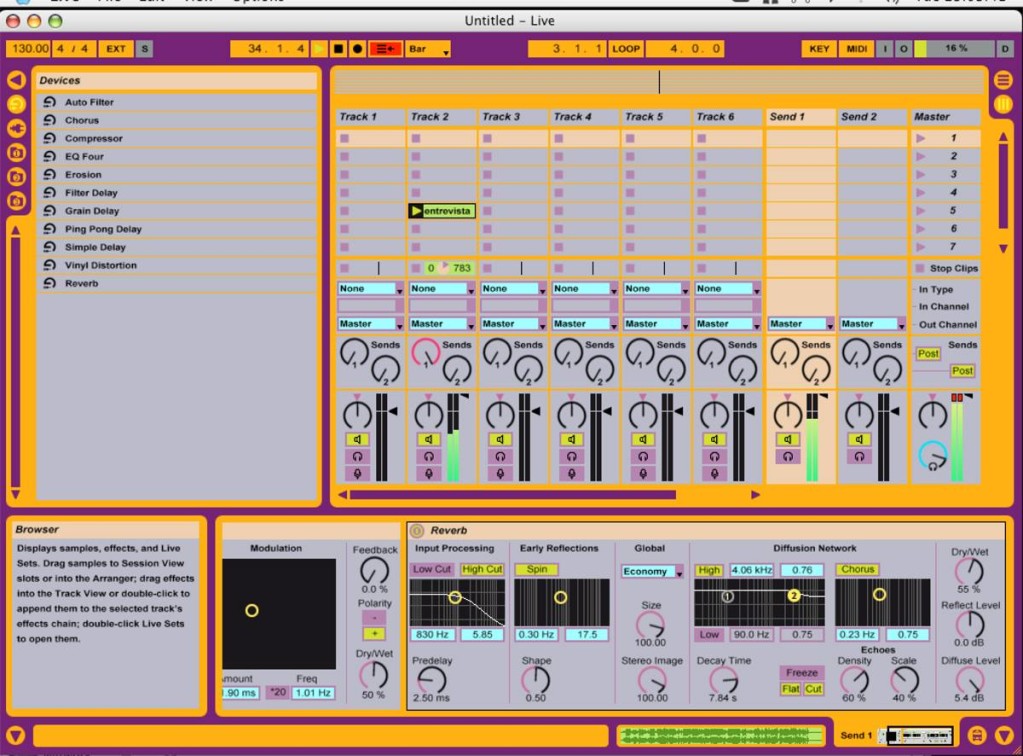Ableton Live turned 20 in October, and it goes without saying it’s had a profound impact on music making in intervening years. But want to really see how it’s evolved? Here are screenshots, dated reviews, and even retro installs as proof.
Ableton for their part didn’t make a big deal of that October anniversary – it was much more relevant for all of us to talk Live 11, what’s next. But looking back isn’t just a way to get nostalgic – it’s also helpful to really understanding the interfaces we stare at each day, and seeing the potential for where music software could go next.
To go really crazy with this, some folks installed old versions. Julian Gray went as far as trying every single version. Who here remembers the glossy, jelly-like Live 1.0 icon, for instance? (It was still the era of Mac OS X’s first “lickable” interface and translucent candy-colored Jony Ives iMacs.) The video’s producer has it in mind to do a documentary, and since this happened in March of last year, he’s been busily posting useful VJ tips, so have at his whole channel.
Levi Niha had an interesting project back in 2018, and actually tried to make music with the 2001 build of Live. That’s something some of us did back in the day, but maybe haven’t tried since. In a testament to Live’s uniquely consistent interface over the years, it wasn’t much effort – and the file opened successfully in Live 10 “without a single issue.”
Let’s embarrass Ableton a bit here, too, and go back to their first uploads. It’s weird to admit, but CDM as a site is older than YouTube. (Yeah, really – I registered the domain in 2004 and was publishing in earnest from the start of 2005.) Ableton had their YouTube channel up in 2006. And looking back at their videos, the message is actually really clear. All that’s really dated about this video is its low-resolution graphics, and some dated musical clips in the screencast portion. (Kid Beyond still holds up as a performer.) I mean, some people even still have their old M-Audio Trigger Fingers.
Before APC, Launchpad, and Push, DIY was king. If taping up the Trigger Finger was one end of the spectrum, at the other was Monodeck. That’s Dave Hill’s voice in the background. (Sasha also had a DIY controller he used onstage with a Mac G5 – I weirdly caught that setup with the Ableton founders in New York.)
Or check a 2009 video by Dennis DeSantis, before he wrote his influential book Making Music.
How did the UI evolve? You can go all the way back to Live 0.9 alpha in 2001, as Ableton shared in summer 2020. A misconception was that Live was prototyped in Max. While Max patches (and Reaktor patches) by Robert Henke and Gerhard Behles did influence Live’s development, the development team did not actually prototype the DAW in Max, though some later devices like Operator were built in Max first, at least to mock up interfaces.

Something I’m surprised people haven’t discussed about this screenshot – notice that Warper was a device rather than something built into clips and the Clip view. In some ways, it’s a little unfortunate that didn’t stick.

Here’s Live as a lot of us experienced it, in Live 1.5.

The road from Live 1.0 to 1.1 to 1.5 and so on was frankly a bit rough, having been there. Some basic features took a little time – worth remembering if you’re ever checking out new software today. This image from Sound on Sound I’m sure was provided by Ableton (as it’s a demo of prerelease software, and you’ll notice is in German). The Q&A from June 2002 is funny – Live didn’t have a bounce function until 1.5. The workaround, though, we still use today – record into a new clip on a trap, using already-available routing options.
I wanted this screenshot, though, just to make sure I wasn’t remembering wrong – Live 1.5 still didn’t have a way to turn Warp off or to select what later would become warp modes. Loop was also linked to warping, in a weird twist that remains today. (Only recently there’s a workaround, using Follow Actions).
Pictures and videos are nice, but as a writer, I also like reading vintage reviews.
Laura Pallanck wrote a really precise review of Live 1.5, noting some important details – pre-fader effects, templates, optimizations that allowed Devices to consume CPU only when routing signal, drive streaming, and bi-directional MIDI. At the same time, she put it as plainly into one sentence as anyone, even while the rest of us (raises hand) were getting tangled in complicated explanations:
“The program was designed as a real-time performance tool to play samples, but Live offers much more than what hardware samplers can.”
MIX, 2002
https://www.mixonline.com/technology/ableton-live-15-369438
You can also read the first review I wrote of Live – there were more later for Macworld and Keyboard as well as CDM. It’s on O’Grady’s PowerPage, and carries Jason’s byline but … you’ll figure out it was me, from the years I was writing PowerPage’s Mobile Musician column.
Mobile Musician: Ableton Live Reviewed
I’ll cringe at parts of that, but I think I was correct about Live’s dual appeal to newcomers and experimentalists, which has held up. I talked about being fascinated by abusing the warping features for experimental sounds – making it into a granular instrument. And I think for all the criticism of Live spawning cookie-cutter productions, I’ll defend my early optimism that it would also generate new ways of using the computer as improvisatory instrument:
DJs could store source material as files and mix an entire evening with just a blank canvas to start out with, dropping in new files and tweaking effects as they go. And even without an audience, Live finally makes the creative process feel improvisatory.
I wrote more detailed reviews later for proper mags, of course. But then you can also turn back the clock to read Dave Hill, Jr., who would go on to write a book on the software and even run Ableton’s PR for a long and distinguished tenure. (When I got the first builds of Live for PowerPage, the PR came directly from Claudia Weidner who was juggling I think all communications at the time.)
This was Mix’s first review:
https://www.mixonline.com/technology/ableton-live-10-369416
Notice that Dave thinks like a drummer, and calls warping “transient detection.” I think he was also more practical to focus on the at-home use case, even if I was dragging the thing, warts and all, into weird experimental scores to play for modern dance.
By the way, those old screenshots are small for a reason – we were running lower-res displays. Robert Henke posted a screen grab of 1.5, partly showing the enduring, fairly ingenious and underrated, default Reverb, alongside what is surely one of the ugliest ever color schemes for, uh, anything ever.

But check the specs:
Live Version 1.5
Spring 2002
System Requirements:
G3 Macintosh or faster
64 megabytes of RAM
CD-ROM drive
MacOS 8.6
256 color monitor, 800 x 600 pixels
There’s a nice interview with Robert from 2015, too, in FACT:
Shaping Sound in Time: Robert Henke on the future of music and machines
For more, there was a nice thread going in the fall on Ableton’s forum.
Anyway, that’s all the Ableton Live I can stand for the moment. But if you have other memories to share or do desire some longer history, let us know.